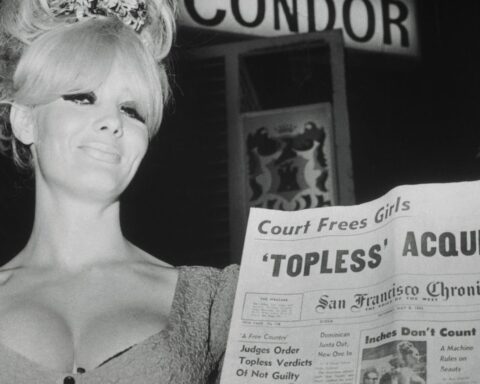The Gospel According to Andre
(USA, 94 min.)
Dir. Kate Novack
Programme: TIFF Docs (World Premiere)
In The Gospel According to Andre, Kate Novack offers a long needed and detailed examination of Andre Leon Talley’s life and career. Born and raised in the segregated American South, Talley, a six-and-a-half-foot tall black man with a loud voice and decipherable Capote-esque style, has risen through the ranks of the world’s most recognized fashion editors, becoming a fashion legend.
Through a set of interviews with his close friends and colleagues, Novack draws a multifaceted portrait of the fashion editor. The film features plentiful celebrities, including Marc Jacobs, Tom Ford, Anna Wintour, Bethann Hardison, Valentino, and Manolo Blahnik, all of whom are big fans of Talley’s work. Their accounts combined with masterfully curated and researched archival footage expose Talley’ lifelong achievements.
The first half of the film sheds light on Talley’s childhood, university life and the start of his fascinating career, which exhilarate with sincerity and depth.
Raised by his beloved grandmother, Bennie Frances Davis Talley, Talley spent his early years in Durham, North Carolina. Mrs. Davis tried to keep her grandson sheltered from the harsh realities of the South, while imparting to him strict discipline and orthodox morals. Every Sunday, she took Talley to their local black church, which has come to be the foundation of his character.
Having faced racial abhorrence in his teens, Talley realized that the only way to get retaliation for bigotry is to become better than everyone else. Hence, he decided to pursue his passion for French studies and got a scholarship at Brown University.
The first part of Novack’s film is energetic, vivacious and colorful. The filmmaker masterfully puts the archival footage together to recreate Talley’s early life experiences. Beautiful black women in stylish hats cueing in front of the church and the fashionable Durham’s boutiques “for whites only” wooden houses with cozy porches and no electricity, are among the images Novack presents in her film. Splendidly edited together, they capture Talley’s experience of growing up in the South and chronicle the development of the star’s personality.
After university, Talley moved to New York, where he met the second most important woman in his life after his grandmother, Diana Vreeland. The former editor-in-chief of Vogue magazine and latterly the consultant of the Costume Institute at MOMA, Vreeland immediately recognized Talley’s talent and hired him as her assistant. In his interviews, Talley talks about Vreeland with enormous respect, love and gratitude.
Once Talley entered the doors of New York’s fashion industry, he has never looked back. His unique ability to recognize detail and channel it on paper was discerned by the industry professionals and earned him a job at Vogue. However, even amidst the peak of his career, Talley experienced racial backlash. With tears in his eyes, he recalls racist remarks that his colleagues at Vogue used to say behind his back.
While primarily exploring Talley’s path of becoming a fashion guru, Novack attempts to make her film relevant to the modern day in the second half of her film. She chronicles the 2016 presidential election through the eyes of Talley and his friends. Novack captures him watching Trump’s inauguration on TV; his face transmits disappointment and repulsion. Later on in the film, the director follows Talley to Durham, where he visits his grandmother’s house and reminisces about his youth.
Compared to the exciting opening section of the film, the final part of the documentary is bleak. In an attempt to diversify the film’s focus, Novack loses the film’s original rhythm and clear structure. While the film’s beginning dynamically explores Talley’s character and aspirations, its ending turns redundant and colorless. It seems as if Talley’s life story drives the first half of the film, while Novack’s artistic choices deflate its conclusion.
Nonetheless, Talley’s opulent presence overshadows the directorial flaws and makes the film’s underwritten moments seem somewhat irrelevant. Despite it being a documentary, Talley gives a nearly theatrical, entertaining performance and simultaneously stays true to himself. You exit the theatre with an immense sense of respect for this person, who has indeed become better than everyone else.










